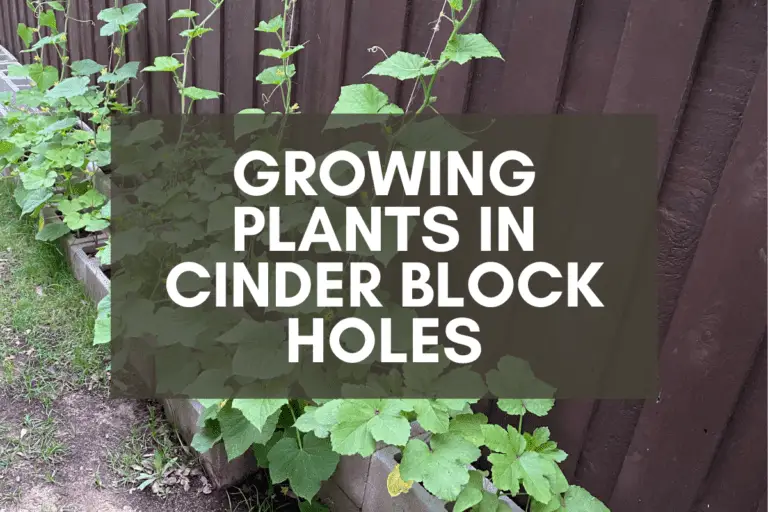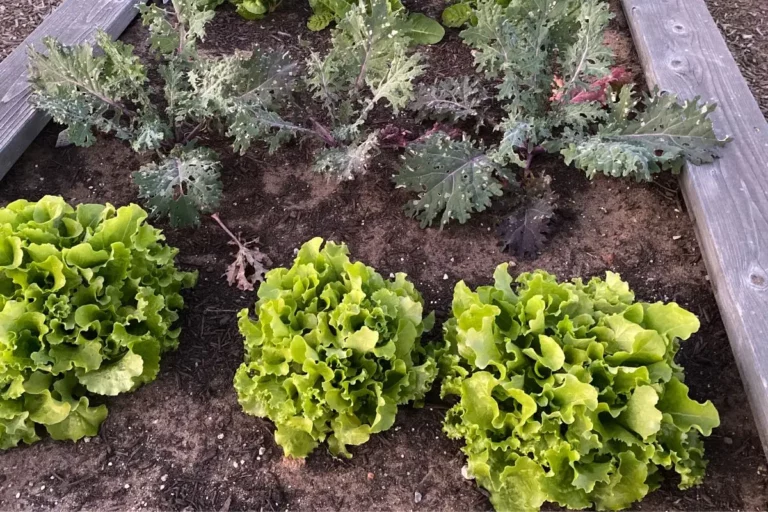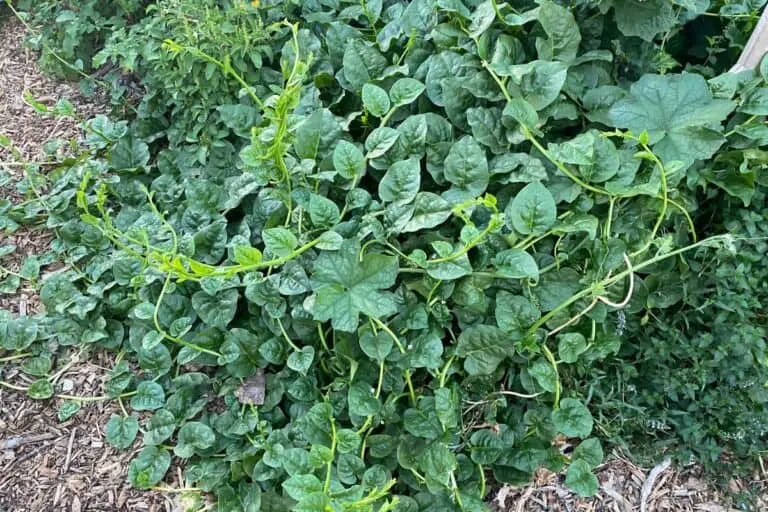What Plants Grow Well in Cinder Block Holes?
If you’ve thought about building a raised garden bed using cinder blocks, have you ever stopped to wonder, “What plants can I grow in cinder block holes?”
I was in one of the big home improvement stores earlier this year, and I asked myself that very thing while loading cinder blocks onto my metal push cart. I had just decided to build my first cinder block garden bed, and although I had planned out the garden, I hadn’t made any plans for the cinder block holes that would ring the main planting area.
This got me thinking about what kinds of plants would thrive in those somewhat small cinder block holes. Fast forward several months, and after some trial and error through the summer and early fall, I’ve learned a lot about what grows best in cinder block holes.
The best plants to grow in cinder block holes are those that thrive in relatively tight spaces–such as beans, bok choy, chard, chives, garlic, leek, lettuce, peas, scallions, shallots, spinach, and strawberries–as well as hardy plants like okra and many herbs and flowers.
When it comes to building materials for raised garden beds, wooden boards are the most common, but nicer, rot-resistant kinds such as cedar and redwood can be rather pricey (and they’ll still rot eventually). On the other hand, cinder blocks are safe, sturdy, cost-effective, long-lasting, and endlessly customizable depending on the size and shape of your gardening area.
To be clear, I’ve called these blocks “cinder blocks” since I was a child, but the blocks you’ll find in home improvement stores are technically “concrete blocks.” Unlike cinder blocks–which are made with water, cement, and an ashy aggregate (typically coal ash)–concrete blocks are made with water, cement, and a stone or sand aggregate.
I use the phrase “cinder block” throughout this article because it seems to be the most commonly used term for these blocks–and because that’s what I’ve always called them!
Disclosure: This post may contain affiliate links to some of my favorite products found on Amazon and other retail sites. I’ll earn a small commission from purchases made through those links, at no additional cost to you. Please read my product disclosure page to learn about the care I take when recommending products to my readers.
One final note: Plants grown in cinder block holes might experience more soil dryness than plants grown in the ground or in raised beds. This could stress them out and thus make them more appealing to pests. I recommend having a good soapy water spray ready to go in case aphids or spider mites arrive.
Here are the products I’ve used to create effective soapy water sprays:
- Castile Soap: Dr. Bronner’s Peppermint Pure Castile Soap. This is my favorite all-time product. I can’t recommend it enough!
- Liquid Soap: Mrs. Meyer’s Clean Day Dish Soap. This works well if you’d like to have something on hand for use in both your kitchen and your garden.
- Insecticidal Soap: Safer Insect Killing Soap. For bad infestations, this is my preferred option since it’s designed for this purpose.
Now that you know a bit about how I grow plants in cinder block holes and the products I use to keep them pest-free, let’s take a closer look at this process!
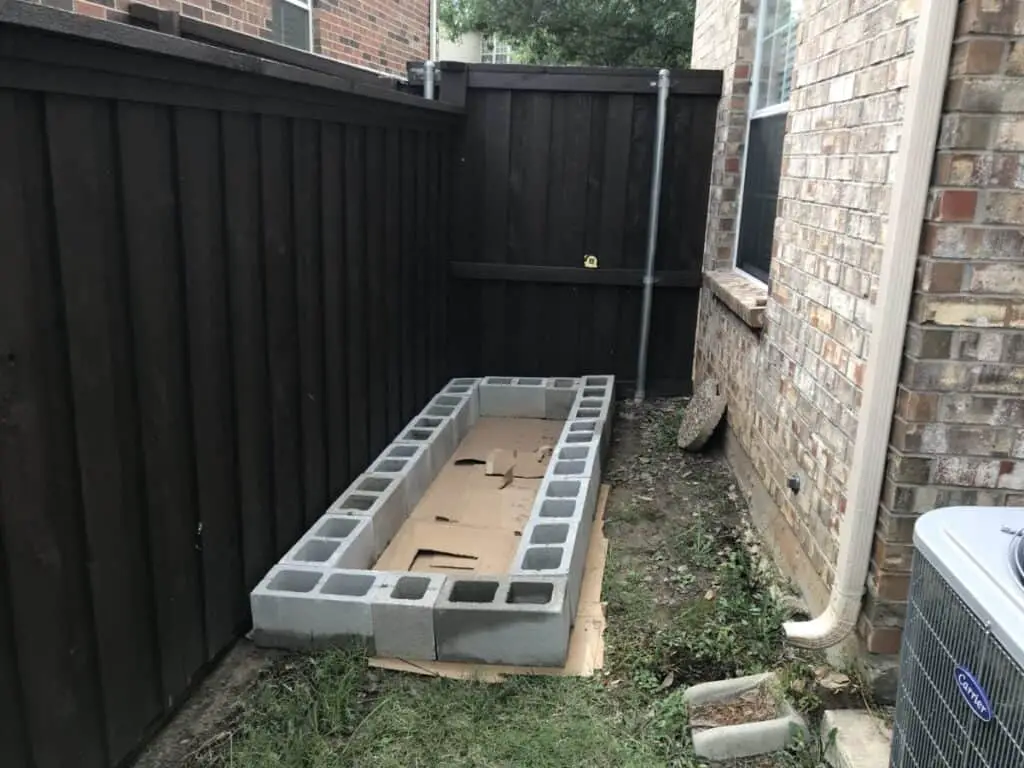
Growing Plants in Cinder Block Holes: Before You Begin
Once you’ve decided to build a raised garden bed using cinder blocks–and before you begin planting in the central area of the bed or in the cinder block holes that surround the central area–you’ll need to give some thought to three important matters: dimension, configuration, and position. These will determine how many and what kinds of plants you can select for your cinder block holes.
When it comes to dimension, you need to consider length, width, and depth (particularly the latter). The length and width will entirely depend on your space and on how long or wide you want your cinder block bed to be, but please pay close attention to your bed’s width. If you build it too wide, you’ll have trouble reaching plants in the middle of the bed.
Here’s where it’s helpful to know the dimensions of cinder blocks so that you can plan accordingly. A typical cinder block from your local home improvement store is:
- 16 inches long
- 8 inches wide
- 8 inches tall
Each cinder block has two holes, and each hole is x inches long, x inches wide, and 8 inches tall. This means that each hole has a total area of x square inches.
Now that you know the dimensions of your cinder blocks, let’s look at several of the most popular configurations to determine which one best suits your needs. The most important thing to remember is that it’s best to design your main planting area to be no more than 4 feet wide. If your main planting area is wider than 4 feet, you’ll struggle to reach any plants that are growing in the middle of the bed.
If you take a look at the list below, you’ll see the most popular cinder block configurations. My personal favorites are the 2-1-2, the 1-2-2-1, and the 1-2-1-2-1.
The “2” represents the standard 8x8x16 cinder blocks since they each have two holes. The “1” represents the smaller 8x8x8 half blocks since they only have a single cinder block hole. The type and number of blocks that you place side by side will determine the overall width of your cinder block garden bed:
- 1-2: These narrow beds will have only 3 cinder block holes on each end of the bed, which means the main planting area will only be 8 inches wide. I don’t recommend this configuration unless you’ve got a very tight space.
- 2-2: The 2-2 configuration means that you’ll have 4 cinder block holes on each end of the bed. The main painting area will be 16 inches wide, which is still rather narrow for my liking.
- 2-1-2: This configuration will have 5 cinder block holes on each side of the bed and a main planting area that’s 24 inches wide. This is the kind of bed I created earlier this season in a previously unused corner of my yard. Although the available space was minimal, the cinder block bed got 8 hours of sun throughout much of the year due to the angle of my house and the path of the sun overhead.
- 1-2-2-1: With 6 cinder block holes on each side of this bed, the main planting area will be 32 inches wide, which makes this configuration one of my favorites.
- 1-2-1-2-1: Much like the 1-2-2-1 configuration, I like this setup because it enlarges the main planting area (giving you 40 inches to plant in) without being too large for comfort. It also leaves you with 7 cinder block holes on each side of the bed.
- 1-2-2-2-1: This is the largest configuration I can recommend, and even then, I feel it’s too large since the bed’s width (measured from exterior edge to exterior edge) will be more than 5 feet wide, potentially making it difficult for you to reach some of your plants.
Once you’ve determined how wide you want your bed to be, you’ll need to figure out whether you want your bed to be 8 inches tall (the height of 1 cinder block) or 16 inches tall (the height of 2 cinder blocks). I prefer the 16-inch height, but if you do so, you’ll need to offset your stacked blocks to ensure maximum stability.
Finally, you’ll want to pay close attention to the amount of sunlight your cinder block bed gets throughout the day. Because cinder blocks absorb heat, you’ll need to mulch deeply and water frequently during the hottest summer months to ensure the soil doesn’t dry out and to protect your plants, especially the ones you’ve planted in holes of the cinder blocks.
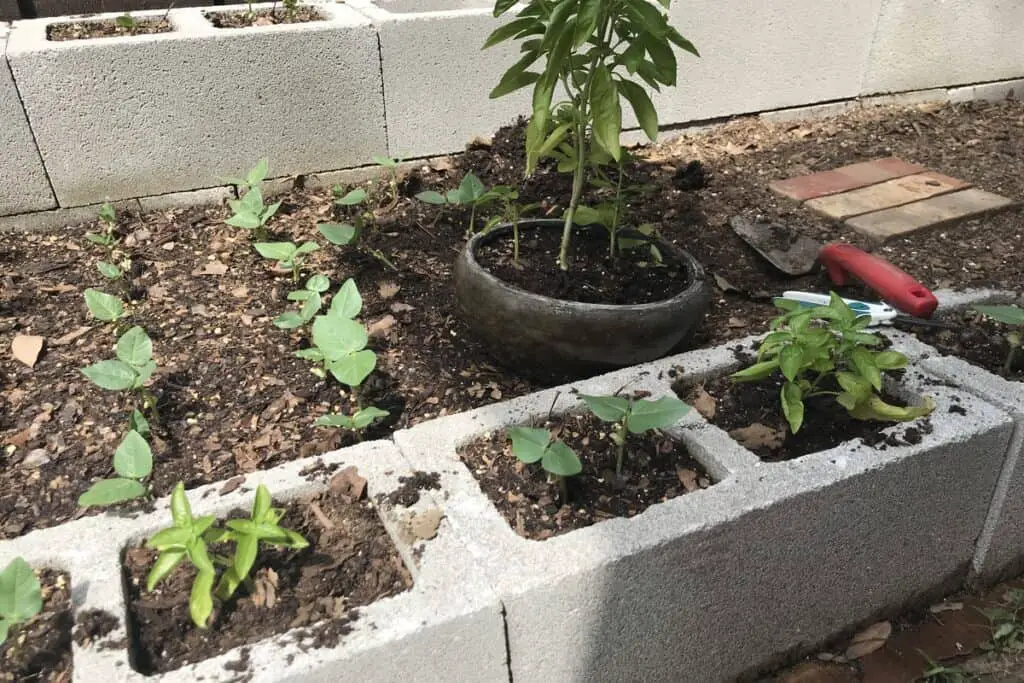
Selecting Plants for Cinder Block Holes: Tips and Tricks
Now that we’ve covered the basics of cinder block gardening, let’s talk about what plants will grow well in cinder block holes.
The key to growing plants in cinder block holes is to select the right kinds of plants with the right kinds of root systems, those that can survive and thrive despite limited soil and overall space constrictions. At this point, you’re probably asking yourself, “That’s great, but how do I know which kinds of plants are the right kinds of plants?”
Well, here’s the good news: I’ve got a simple trick for finding the right plant for these small cinder block holes. All you’ll need to do is to practice a variation of the square foot gardening method.
Created in the early 1980’s by engineer-turned-gardener Mel Bartholomew, square foot gardening is a technique that involves dividing your planting area into square foot grids and planting an optimal number of plants per square foot, depending on the type and size of each plant, in order to maximize your harvest.
For smaller plants (such as green beans, garlic, peas, and spinach), you can plant up to 9 plants per square foot. But larger plants need more space overall, with varieties such as broccoli, brussel sprouts, or cauliflower requiring 2-3 square feet per plant.
And here’s why square foot gardening is helpful for those of us who want to grow plants in cinder block holes: Each hole is typically 5 ½ inches by 5 ½ inches. This means that the available space in cinder block holes is nearly ¼ of a square foot.
Simply put, if you look at a square foot gardening chart and see that you can grow 4 or more of a certain variety per square foot, the odds are pretty good that you can grow 1 of those plants in a cinder block hole.
There are some unique exceptions to this general rule of thumb, so I’ve created a chart below that outlines the plants that grow well in cinder block holes (those listed under the “Yes” column) and those that likely won’t thrive in confined spaces (those listed under the “No” column). There are also certain varieties that will grow in cinder block holes but will generally under-produce due to space limitations. I’ve listed these in the “Maybe” column.
| Plants | Yes | Maybe | No |
|---|---|---|---|
| Arugula | ✔ | ||
| Basil | ✔ | ||
| Bean | ✔ | ||
| Beet | ✔ | ||
| Bok Choy | ✔ | ||
| Broccoli | ✔ | ||
| Brussel Sprouts | ✔ | ||
| Cabbage | ✔ | ||
| Carrot | ✔ | ||
| Cauliflower | ✔ | ||
| Celery | ✔ | ||
| Chives | ✔ | ||
| Cilantro | ✔ | ||
| Collards | ✔ | ||
| Corn | ✔ | ||
| Cucumber | ✔ | ||
| Eggplant | ✔ | ||
| Dill | ✔ | ||
| Fennel | ✔ | ||
| Garlic | ✔ | ||
| Kale | ✔ | ||
| Kohlrabi | ✔ | ||
| Lavender | ✔ | ||
| Leek | ✔ | ||
| Lemongrass | ✔ | ||
| Lettuce | ✔ | ||
| Marigold | ✔ | ||
| Marjoram | ✔ | ||
| Melon | ✔ | ||
| Mint | ✔ | ||
| Mustard | ✔ | ||
| Okra | ✔ | ||
| Onion | ✔ | ||
| Oregano | ✔ | ||
| Parsley | ✔ | ||
| Parsnip | ✔ | ||
| Pea | ✔ | ||
| Pepper | ✔ | ||
| Potato | ✔ | ||
| Pumpkin | ✔ | ||
| Radish | ✔ | ||
| Rutabaga | ✔ | ||
| Rosemary | ✔ | ||
| Rue | ✔ | ||
| Sage | ✔ | ||
| Shallot | ✔ | ||
| Spinach | ✔ | ||
| Squash | ✔ | ||
| Strawberry | ✔ | ||
| Swiss Chard | ✔ | ||
| Sunflowers | ✔ | ||
| Tansy | ✔ | ||
| Tarragon | ✔ | ||
| Tomatillo | ✔ | ||
| Tomato | ✔ | ||
| Thyme | ✔ | ||
| Turnip | ✔ | ||
| Sage | ✔ | ||
| Spinach | ✔ | ||
| Sweet Potato | ✔ | ||
| Watercress | ✔ | ||
| Watermelon | ✔ | ||
| Zinnia | ✔ |
Marigolds will not reach their full potential when planted in a cinder block hole, but I still recommend doing so. Spider mites are the bane of gardeners everywhere, and marigolds, even smaller plants, will serve as an effective trap crop, alerting you to the looming infestation and giving you time to develop an effective treatment plan and spray your plants with one of many powerful, natural insecticides.
One quick final note. According to the square foot gardening method, okra and sunflower plants should have an entire square foot to themselves, which might suggest that they wouldn’t grow well in cinder block holes. But these hardy plants have the ability to send their roots down into the soil beneath the cinder blocks, so I’ve seen them thrive in cinder block raised beds even though their thick stems take up much of the cinder block hole.
Pro Tip: If you decide to grow okra or sunflower plants in a cinder block hole, plant a climbing plant–such as bean, pea, or malabar spinach–in the adjacent cinder block hole. The okra or sunflower will provide a natural trellis for the climbing plant to grow up throughout the gardening season.
What Plants Don’t Grow Well in Cinder Block Holes?
Many plants grow just fine in cinder block holes–as you can see from the chart above–but there are quite a few varieties that will not thrive in small, confined spaces.
Larger plants such as bok choy, broccoli, brussel sprouts, cauliflower, eggplant, melon, pumpkin, squash, and tomato should not be grown in cinder block holes. Neither should certain herbs be grown in them such as lavender, lemongrass, and sage due to their size and bushiness.
Mint should never be grown in cinder block holes since it’s incredibly invasive and can easily spread to other parts of the garden bed. Corn needs more support than a handful of plants can possibly provide, and both potatoes and sweet potatoes have no room to expand their roots within the confines of cinder block holes.
Are Cinder Blocks Safe for Vegetable Gardens?
There’s been a lot written about this topic over the years, which is understandable since we all want to make sure we’re not accidentally contaminating our plants with chemicals that could leech into the soil. So let me share some good news with you.
Cinder blocks purchased at home improvement stores are made of water, concrete, and a stone aggregate. These “concrete blocks,” as they are often called, do not contain ash or chemical byproducts, unlike blocks produced decades ago. They are thus entirely safe for vegetable gardens.
Are Cinder Blocks Good for Raised Garden Beds?
I spent many years gardening in wood raised beds before giving cinder blocks a try, mostly because I favored the look of wood over that of cinder blocks. However, replacing rotten wood is not a fun task, so I began wondering whether cinder blocks might be a better alternative. After experimenting with different designs–and testing the beds out for a year–I came to a pretty straightforward conclusion.
Cinder blocks are an excellent choice for raised garden beds. They are environmentally safe, they do not rot or decay, and they are easily arranged and rearranged. They can also be stacked on top of each other to form taller raised beds, making it easy to design the perfect bed for any garden space.



